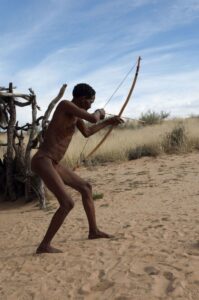 Bow Hunting Turkeys
Bow Hunting Turkeys
Bow Hunting Turkeys
Introduction to Bow Hunting Turkeys
Bow hunting turkeys is an exhilarating and challenging activity. It involves using a bow and arrow to hunt wild turkeys, adding an extra level of difficulty compared to traditional methods. This ancient practice has been passed down through generations.

To succeed, hunters must understand turkey behavior and habits. Turkeys have exceptional eyesight and hearing, so it’s important to blend in and stay undetected. Knowing their mating patterns and vocalizations is also helpful.
Equipment used for bow hunting is different from firearms hunting. Specialized bows and broadhead arrows are needed for accuracy and range. Practicing shooting from various positions and distances is essential.
Avid bow hunters are drawn to the challenge of harvesting a turkey with this method. The silent approach excites and pumps adrenaline. Waiting for the perfect moment to release the arrow is unbeatable.
Bow hunting turkeys connects you to nature on a deeper level. Immerse yourself in the world of turkeys and develop an appreciation for these creatures. Grab your bow and head out! Don’t miss out on this incredible adventure.
Understanding the Behavior and Habitat of Turkeys

Unlocking the secrets of turkey behavior and habitats requires us to respect their natural instincts. They can survive in different places, adapting to the changing climate and environment. By studying their behaviors and becoming familiar with their preferred areas, we can better understand their movements and hunt them with a bow.
Turkeys usually live in wooded areas that offer food such as acorns, nuts, seeds, and bugs. They also enjoy open fields near forests or hedgerows. This knowledge makes it easier to locate turkey habitats when bow hunting.
Turkeys have a complex social structure. They live in groups with dominant males (gobblers), subordinate males (jakes), and hens. During mating season, gobblers show off to attract partners. Knowing this helps us pinpoint areas where turkeys are likely to gather at certain times of the year.
Learning turkey vocalizations helps us succeed with bow hunting. Male turkeys make distinctive gobbles that echo in springtime forests. These sounds serve many purposes – from drawing mates to displaying dominance. Knowing how to mimic these calls accurately lures turkeys into bow range.
Reminder: Be patient when bow hunting turkeys. They have great vision and hearing, so stay still and blend into your environment until the perfect shot presents itself.
Ready your bow and get your game face on – bow hunting turkeys calls for more than just a feathered hat!
Essential Bow Hunting Equipment for Turkeys
When it comes to bow hunting turkeys, the right equipment is essential! Let’s look at some must-haves for a successful hunt.

Bow and arrows provide accurate, powerful shots from varying distances.
Camo clothing allows you to blend into the background.
Turkey decoys attract them closer for better shot opportunities.
A blind or ground stake conceals the hunter.
In addition, choose the right broadheads for maximum penetration and kills.
Mouth or friction calls replicate turkey sounds and draw them to you.
Did you know? Bow hunting for turkeys dates back to pre-Columbian times, as Native Americans hunted them with bows and arrows.
Time to sharpen your arrows and aim! Turkeys won’t be the only ones getting stuffed this Thanksgiving.
Preparing for a Successful Bow Hunt
Ready for a successful bow hunt? Choose a top-notch compound bow, with draw weight and arrows tailored for turkey hunting. Identify roosting areas by listening to gobbling at dawn and dusk. Use trail cameras to observe movement patterns.
Camouflage clothing that blends into the background and covers your face is essential. To boost accuracy and speed, practice shooting from various distances and angles in different conditions. Place decoys to attract turkeys within range, and remember: precision is key!
Envision yourself in nature’s serenity and revel in the thrill of hunting turkeys with a bow and arrow. With the right preparation, you can have an unforgettable experience and connect with nature! Happy hunting!
Effective Tactics for Bow Hunting Turkeys
Bow hunting turkeys requires precision and patience. Aim for the vital organs for a quick and humane kill. Master turkey calls and decoys to entice them within range. Move slowly and use natural cover to conceal yourself. Knowing turkey behavior patterns and habits can give you an edge. Consider wind direction and hunting conditions.
Ancient tribes crafted arrows from materials found in nature. Bow hunting turkeys tests your skills. Dedication and perseverance will help you master the tactics.
Ethical Considerations and Safety Measures
Ethical considerations and safety measures are a must when bow hunting turkeys. These principles ensure everyone’s well-being. They also promote responsible hunting practices.
Hunters must follow these guidelines:
- Hunting Laws and Regulations: Know local hunting laws and regulations for turkey hunting. Get the right licenses and permits. Follow hunting seasons and bag limits.
- Hunter Education: Learn about turkey behavior, hunting techniques, and safe firearm handling. Take comprehensive training courses focusing on ethical and safe hunting practices.
- Concealment and Camouflage: Blend into the surroundings to avoid detection. Wear camouflage clothing and use natural cover like blinds or trees for safety.
- Shot Placement: Make accurate shots for quick, humane kills. Aim for the head or neck for swift, clean kills.
By following these suggestions, hunters ensure ethical bow hunting practices. This ensures safety for everyone involved. Understanding and obeying hunting laws shows respect for wildlife. Education encourages responsible decision-making.
Tips for Bow Hunting Success
Bow hunting turkeys requires a mix of skill, patience, and strategy. Here are some tips to boost your luck:

- Know your gear: Make sure your bow and arrows are tuned and working correctly.
- Practice often: Shoot at different distances to sharpen accuracy and build muscle memory.
- Use stealth: Wear camouflaged clothing and use scent control products. Move slowly and quietly.
- Scout your area: Hunt for food sources and signs of turkey activity.
- Call wisely: Use box calls, slate calls, or mouth diaphragms to lure gobblers.
- Hunt at the right times: Turkeys are most active early and late in the day.
For added success, try decoys to distract the turkey while you draw back. Plus, use trees and brush as blinds for a good shooting position.
There’s a legend of a hunter who couldn’t catch a clever gobbler despite many tries. It’s a reminder that skill isn’t enough – it’s about perseverance and respecting nature.
Bow hunting turkeys is not a guarantee. But with the right skills, tactics, and understanding of the birds, you can increase your chances of an exciting and rewarding hunt.
Conclusion: Bow Hunting Turkeys: Master the art and make Thanksgiving special with some archery!
Conclusion: Mastering the Art of Bow Hunting Turkeys
To ace bow hunting turkeys, you need skill, accuracy, and patience. Here are tips to up your game and chances of success:
- Blend in: Wear camo that matches the environment and use natural cover to hide your silhouette.
- Practice shooting: Take time to practice your shooting form and aiming, for a clean kill shot.
- Learn to call: Master turkey calls, like clucks, purrs, and yelps, to draw them in range.

To take it up a notch, get the right equipment – a top-notch compound bow with a suitable draw weight, and broadheads tailored for turkey hunting. Also, set up strategically – pick a spot where turkeys feed or travel, with natural cover and a clear shooting lane. Lastly, be patient! Remain still and wait quietly for long periods of time. With dedication and practice, you’ll become a skilled bow hunter.
Frequently Asked Questions
1. How do I prepare for bow hunting for turkeys?
The first step is to make sure you have all the necessary licenses and permits. You should also invest in high-quality camouflage clothing and practice your shooting skills regularly. It’s also important to learn about turkey behaviors and habitats to increase your chances of success.
2. When is the best time to bow hunt turkeys?
The ideal time to hunt turkeys with a bow is during the spring season, which typically runs from April through May. This is when the birds are most active and vocal, making them easier to locate and call in. However, be aware of local hunting regulations and harvest quotas.
3. What kind of bow should I use for turkey hunting?
A compound bow or recurve bow with a draw weight of at least 40 pounds is recommended for effective turkey hunting. It’s also important to make sure your bow is properly tuned and your arrows are well-matched to your bow’s specs for optimal accuracy.
4. What are some common turkey hunting techniques?
Some popular techniques for bow hunting turkeys include using camouflage blinds to conceal yourself, using decoys to attract birds, and mimicking turkey vocalizations with calls. Hunters also often employ a “run-and-gun” approach, moving stealthily through the woods to locate active birds.
5. How should I handle a harvested turkey?
Once you’ve successfully taken a turkey, you should immediately tag and report the bird according to local regulations. Always handle the bird with care to avoid damaging the meat or feathering. If possible, field-dress and cool the bird as quickly as possible to ensure the highest quality meat.
6. What are some important safety considerations for turkey hunting with a bow?
Always be sure of your target and what lies beyond it, as arrows can travel long distances and may pose a danger to other hunters. Use caution when moving through the woods, and always wear blaze orange or other highly visible clothing. It’s also important to prioritize safety when setting up and taking down hunting equipment, such as tree stands or blinds.
[…] Check out this post about hunting turkeys with a bow…BOW HUNTING TURKEYS […]